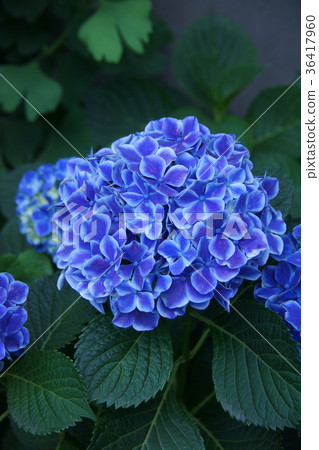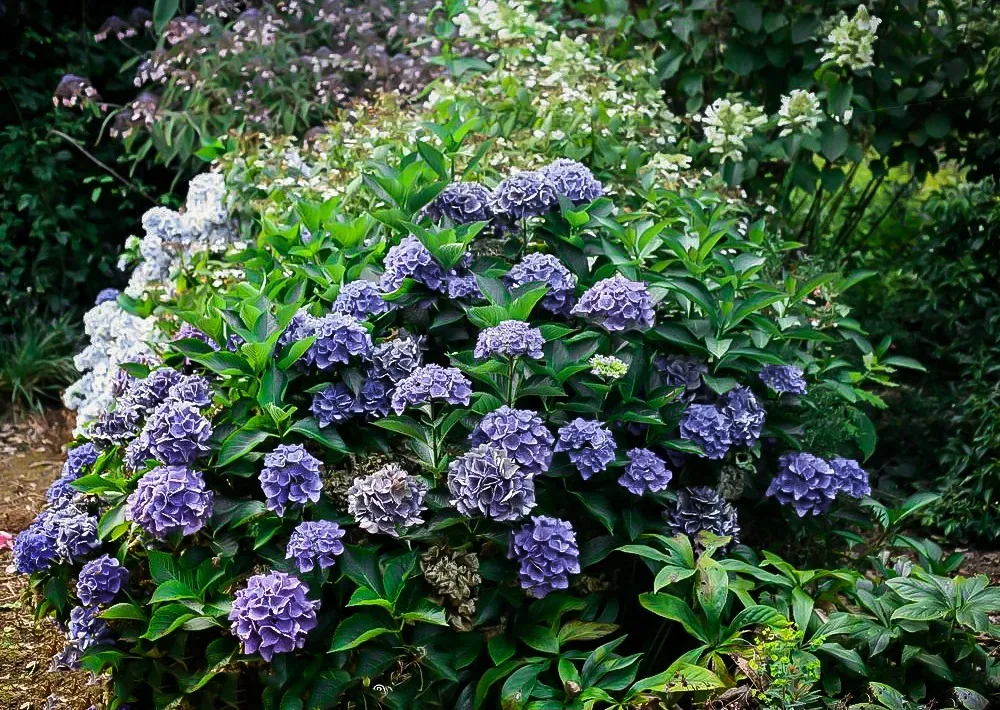Hydrangea Bavaria: The Showstopper Shrub That's
Hydrangea Bavaria is a beautiful and versatile shrub that can add a touch of elegance to any garden. It is known for its large, showy blooms that can range in color from white to pink to blue. Hydrangea Bavaria is relatively easy to care for and can be grown in a variety of climates.
Introduction
Hydrangea Bavaria is a member of the Hydrangea genus, which includes over 70 species of shrubs and trees. Hydrangeas are native to Asia, North America, and South America. They are prized for their colorful flowers, which can bloom in a variety of colors, including white, pink, blue, purple, and green.
Hydrangea Bavaria is a relatively new variety of hydrangea, first introduced in 1995. It is a hybrid of two other hydrangeas, Hydrangea macrophylla and Hydrangea serrata. Hydrangea Bavaria inherits the best qualities of its parent plants, including large, showy blooms, strong stems, and cold hardiness.
Main Content
Hydrangea Bavaria is a relatively easy plant to care for. It prefers full sun to partial shade and moist, well-drained soil. Hydrangea Bavaria is a heavy feeder, so it is important to fertilize it regularly during the growing season.
Hydrangea Bavaria is relatively pest- and disease-resistant. However, it is susceptible to powdery mildew, a fungal disease that can cause white spots to develop on the leaves. If your hydrangea Bavaria develops powdery mildew, you can treat it with a fungicide.
Hydrangea Bavaria is a deciduous shrub, which means it loses its leaves in the fall. It will start to bloom in the spring and continue to bloom until the fall. The color of the blooms can vary depending on the pH of the soil. In acidic soil, the blooms will be blue. In neutral or alkaline soil, the blooms will be pink.
Conclusion
Hydrangea Bavaria is a beautiful and versatile shrub that can add a touch of elegance to any garden. It is relatively easy to care for and can be grown in a variety of climates. If you are looking for a stunning shrub that will bloom all summer long, Hydrangea Bavaria is a great choice.
Here are some additional tips for growing Hydrangea Bavaria:
- Plant Hydrangea Bavaria in a location that receives full sun to partial shade.
- Amend the soil with compost or manure before planting.
- Water Hydrangea Bavaria regularly, especially during hot, dry weather.
- Fertilize Hydrangea Bavaria every few months during the growing season.
- Prune Hydrangea Bavaria in the spring, after it has finished blooming.
- Protect Hydrangea Bavaria from frost in cold winter climates.
With proper care, Hydrangea Bavaria will thrive in your garden for many years to come.
Hydrangea Bavaria is a beautiful, compact hydrangea variety that produces large, mophead blooms in a unique bicolor combination of lavender blue and white. The blooms are long-lasting and appear from midsummer to fall, making Hydrangea Bavaria a welcome addition to any garden.
If you're interested in learning more about Hydrangea Bavaria, I recommend visiting . This website provides detailed information about the plant's care and cultivation, as well as photos and videos of the blooms in all their glory. You can also find a list of retailers where you can purchase Hydrangea Bavaria.
FAQ of hydrangea bavaria
- What is Hydrangea Bavaria?
Hydrangea Bavaria is a type of hydrangea that is known for its large, showy flowers. It is a deciduous shrub that can grow up to 6 feet tall. The flowers are typically white or pink, but they can also be blue or purple depending on the acidity of the soil. Hydrangea Bavaria is a relatively easy plant to care for and is a popular choice for gardens and landscaping.
- What is the best soil for Hydrangea Bavaria?
Hydrangea Bavaria prefers a slightly acidic soil with good drainage. If your soil is alkaline, you can add peat moss or sulfur to acidify it. The soil should also be moist but not soggy.
- How much sunlight does Hydrangea Bavaria need?
Hydrangea Bavaria prefers partial shade. Too much sun can scorch the leaves and flowers. If you live in a hot climate, you may need to provide some afternoon shade.
- How much water does Hydrangea Bavaria need?
Hydrangea Bavaria needs regular watering, especially during the hot summer months. The soil should be kept moist but not soggy. You may need to water more often if it is hot and dry.
- How do I fertilize Hydrangea Bavaria?
Hydrangea Bavaria should be fertilized once a month during the growing season. Use a balanced fertilizer, such as 10-10-10. You can also use a fertilizer that is specifically designed for hydrangeas.
Image of hydrangea bavaria
5 different images of "hydrangea bavaria" from Pinterest:
- A large, white hydrangea bavaria bush in full bloom. The flowers are cone-shaped and clustered together, with a delicate, lacy appearance.

- A close-up of a single hydrangea bavaria flower. The petals are a soft, creamy white with a hint of pink at the edges.

- A hydrangea bavaria bush in full bloom against a backdrop of green foliage. The flowers are a vibrant pink, and the leaves are a deep, dark green.

- A hydrangea bavaria bush in a garden setting. The bush is surrounded by other flowers and plants, and the flowers are a light pink color.

- A hydrangea bavaria flower in a vase. The flower is a deep pink color, and it is surrounded by other flowers and greenery.

Post a Comment for "Hydrangea Bavaria: The Showstopper Shrub That's"